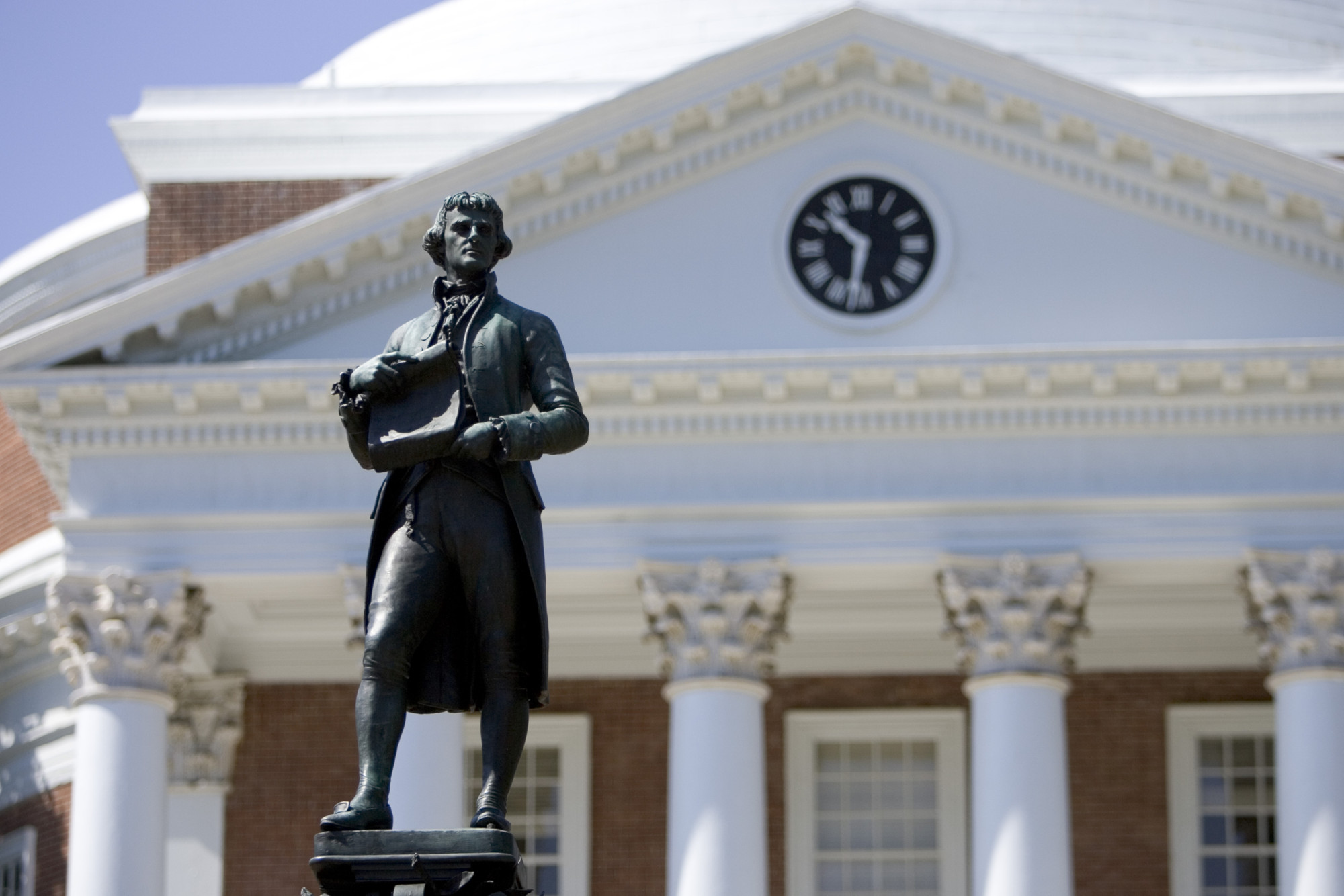The University of Virginia Board of Visitors on Friday approved tuition rates for the 2016-17 academic year, advancing the second year of a multi-year financial program that caps student loan debt while reducing the net cost of a UVA education.
The board adopted a 3 percent average increase in tuition for continuing undergraduate students, representing a half-percent reduction from previous estimates used to model the University’s multi-year financial plan – the result of ongoing efficiencies implemented across the University.
“The approved rates are among the lowest increases in tuition at the University of Virginia in recent history,” Executive Vice President and Chief Operating Officer Patrick Hogan said. “This accomplishment enhances the tremendous value of a UVA education and reflects careful stewardship of limited resources in support of access, affordability and sustainable finances.”
Undergraduate tuition for Virginia students entering in the fall of 2016 will be $13,220. An option securing a guaranteed four-year tuition rate will cost $14,378 per year.
Tuition for second-year Virginia students who entered in the fall of 2015 will increase by $328 to $12,220, while tuition for rising third and fourth-year in-state students will increase from $10,892 to $11,220.
Beginning in 2015-16, total maximum loan debt for low-income Virginians has been cut from $3,500 per year to $1,000 annually. For all other in-state students qualifying for need-based loans, maximum debt has dropped from $7,000 per year to $4,500 annually.
Tuition for non-Virginia undergraduates will increase 3 percent, or $1,216, to $41,722.
The board also approved a 3.1 percent increase, or $78, in mandatory fees for in-state students. Funds will benefit health, safety and security initiatives, including Counseling and Psychological Services, safe and alternative student programming, an expanded SafeRide program and more.
The average housing rate for a double room for the 2016-17 academic year will increase by 3.4 percent. The cost of meal plans will increase by varied amounts depending on the plan, but will average 2.8 percent.
Tuition rates approved Friday apply to the majority of the University’s undergraduate population, but separate rates are set for the McIntire School of Commerce, the School of Engineering and Applied Science and the Frank Batten School of Leadership and Public Policy. Rates for those schools and for all graduate programs can be found here.
As part of the planning effort for tuition- and fee-setting this year, two student committees were formed and were engaged in the process. The committees consisted of representatives of both undergraduate and graduate students from multiple schools, as well as diverse student organizations. The committees met with University administrators to review the proposals for both tuition and fees increases and offer feedback on the recommendations.
“These committees were an excellent opportunity for student stakeholders, from the presidents of individual school organizations to the head of United for Undergraduate Socioeconomic Diversity, to gain a nuts-and-bolts understanding of tuition and fees and to provide feedback to administrators,” UVA Student Council President Abraham Axler said. “I look forward to continuing them next year.”
The Board of Visitors in 2015 endorsed a multi-year financial plan for UVA, with features including the reduction of student need-based loan exposure. The plan provides sustainable financing to maintain UVA’s academic excellence in the years ahead, while also ensuring that any student with the academic qualifications is welcomed at UVA – regardless of ability to pay.
The University meets 100 percent of demonstrated need for all students through a combination of scholarships, grants, loans and work-study jobs. UVA also continues to offer admission without consideration of financial need. It is one of only two public institutions in the United States that makes “need blind” offers of admission while still meeting 100 percent of need for all in-state and out-of-state students.
UVA regularly earns recognition for its world-class academic opportunities, commitment to affordability and its value among the nation’s best universities. In 2015, Kiplinger Personal Finance magazine once again ranked UVA among the top three public universities in the nation in its annual “best value” rankings. The Princeton Review places UVA among the top universities for return on tuition investment and U.S. News and World Report consistently ranks UVA among the top three public universities and in the top 30 overall among national universities.
The 2016-17 tuition rates are calculated using existing assumptions about state funding. If the University’s 2016-17 unrestricted state appropriation increases beyond what is assumed in the multi-year financial plan, the 2016-17 in-state undergraduate tuition rates approved Friday would be revised downward accordingly.
Media Contact
Article Information
February 19, 2016
/content/board-visitors-approves-2016-17-tuition

